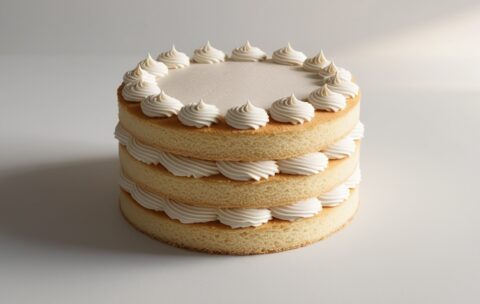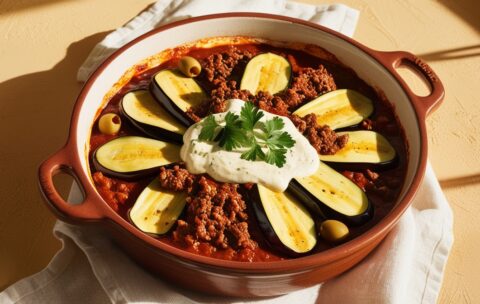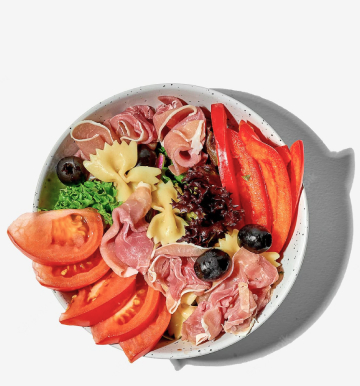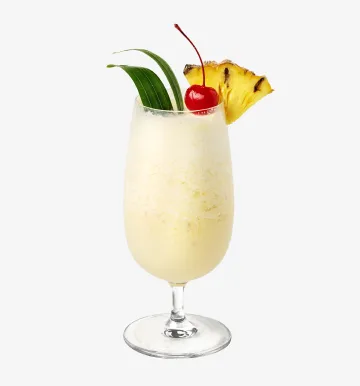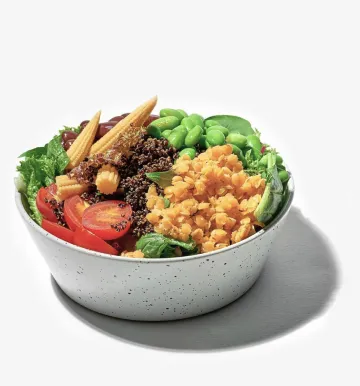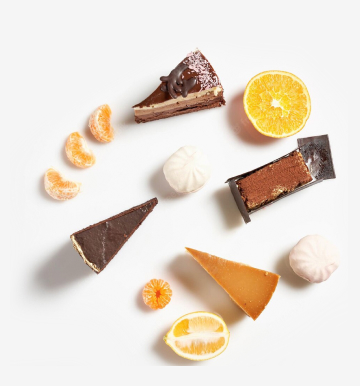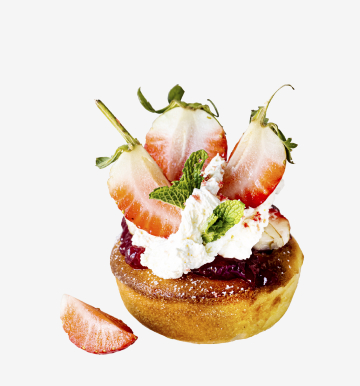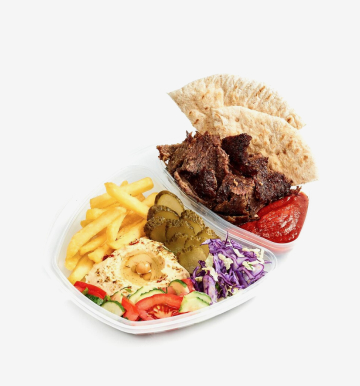Home Update 02
October 4, 2023 2025-06-05 13:04Home Update 02
Become a Home Chef
Learn to cook from scratch and master restaurant-quality meals in your own kitchen. Perfect for beginners and food lovers.

Our Top Courses
We've selected the best programs to get you started. Each course offers step-by-step lessons, hands-on recipes, and guaranteed results — even for beginners.
Whiskey Sour
4 Lessons
1.2 hour
Intermediate
What you'll learn
History & Origins: Discover the origins of the Whiskey Sour, including its 19th-century naval roots and how it evolved into a mainstream favorite.
Ingredient Selection: Learn how to choose the right whiskey (bourbon, rye, or blended), select fresh lemons, and prepare simple syrup.
Techniques & Ratios: Master the proper juice-to-whiskey ratio (typically 2:1), the role of egg white (optional), and the importance of “dry shaking” versus “wet shaking.”
Shaking & Pouring: Develop your shaking technique to achieve a balanced, chilled cocktail with the signature frothy top.
Garnishing & Presentation: Practice professional garnishing methods—lemon wheel, maraschino cherry, and bitters drops—to elevate appearance and aroma.
Variation & Customization: Explore variations such as using different citrus (e.g., lime), flavored syrups, or spiced bitters to personalize the drink.
Tasting & Evaluation: Hone your palate to identify balance, acidity, sweetness, and mouthfeel, ensuring each Whiskey Sour is perfectly harmonious.
Chocolate Mousse
5 Lessons
2.6 hours
Intermediate
What you'll learn
How to select the right chocolate type for mousse (dark, milk, or white)
Techniques for achieving light, airy texture without deflating
How to temper chocolate for maximum flavor and smoothness
Tips for folding ingredients like a pro
Creative plating and garnishing ideas (berries, mint, edible flowers)
Storage methods to keep mousse fresh and fluffy
Fundamentals of Classic Sponge Cakes
2 Lessons
1.2 hour
Intermediate
What you'll learn
Egg-Based Leavening Principles
How egg foam structure traps air for lift
Differences between whole-egg, yolk-only, and white-only foams
Impact of sugar timing on foam stability
Classic Sponge Variations
Genoise: Creating a warm, melted-butter-enriched sponge with a tight crumb
Victoria Sponge: Whisking eggs and sugar to ribbon stage, then folding in butter and flour
Chiffon: Combining whipped egg whites with oil-based batter for ultra-light texture
Mixing & Folding Techniques
Whisking by hand vs. stand mixer: pros, cons, and timing adjustments
Proper folding to avoid deflating the foam—using rubber spatula vs. whisk
Identifying the “ribbon stage” and when to stop folding
Pan Preparation & Baking
Choosing the right pan: bottom-lined vs. unlined; tube pans vs. straight-sided
Lining, greasing, and tapping techniques to prevent sticking
Oven temperature calibration and timing for optimal rise
Troubleshooting Common Issues
Deflated cakes: Causes (undercooked foam, overfolding, abrupt temperature changes) and fixes
Uneven surfaces or excessive doming: Adjusting rack position and heat distribution
Dry or gummy crumb: Balancing moisture with ingredient ratios
Finishing & Assembly
Leveling and slicing sponge layers for clean, even stacks
Simple syrup soaking for added moisture without collapsing structure
Mousse & Bavarian Cream Cakes
4 Lessons
4.3 hours
Intermediate
What you'll learn
How to prepare a stable French or Italian meringue for mousse bases, ensuring smooth, airy texture
Techniques for melting and tempering chocolate, fruit purées, or coffee infusions to flavor mousses
Steps for making Bavarian cream: blooming gelatin, combining with custard base, and folding whipped cream for lightness
Methods for assembling layered desserts: soaking sponge or biscuit bases, pouring mousse, and creating neat, level layers
Tips for unmolding and glazing cakes—mirror glaze or ganache—to achieve a glossy, professional finish
Variations on flavor profiles: dark chocolate-mint mousse, raspberry-vanilla Bavarian, and tiramisu-inspired cream layers
Paella Valenciana
2 Lessons
3.3 hours
Intermediate
What you'll learn
History and Regional Context
Origins of Paella Valenciana and its connections to Valencian agricultural traditions.
Distinctions between classic Valencian paella, seafood paella (Paella de Mariscos), and other regional variants.
Selecting and Preparing Ingredients
Rice varieties (Bomba vs. Calasparra) and their impact on texture.
Choosing quality proteins (chicken and/or rabbit), native beans (judía verde, garrafó), olive oil, and saffron threads.
Preparing vegetables: green beans (bajoqueta), garrafó beans, fresh tomatoes, and garlic.
Cooking Techniques and Timing
Building a sofrito base: sautéing meat, vegetables, and spices to develop depth of flavor.
Proper rice-to-liquid ratio and how to incorporate stock infused with saffron.
Achieving the prized socarrat (crispy rice crust) without burning.
Adjusting heat levels for even cooking and optimal moisture absorption.
Presentation and Serving
Traditional ways to serve Paella Valenciana—family style straight from the paellera.
Garnishing options (lemon wedges, fresh parsley) to enhance aroma and appearance.
Tips for reheating and storing leftovers without compromising texture.
Wagyu Truffle Burger
4 Lessons
1.3 hour
Intermediate
What you'll learn
How to source authentic wagyu beef and distinguish grading (A5 vs. A3, etc.).
Techniques for gently forming wagyu patties that maintain optimal marbling and juiciness.
Methods for cleaning, slicing, and using fresh truffle, as well as alternatives like truffle oil or preserved truffle.
Seasoning balance: how much salt and pepper to enhance wagyu flavor without overpowering it.
Proper bun-to-patty ratio: selecting and toasting a buttery brioche bun to complement the richness.
Topping assembly: choosing and melting premium cheese (such as aged Gruyère or Taleggio) to pair with truffle.
Finishing touches: creating a truffle-infused aioli or mayonnaise, and adding crisp greens and caramelized onions to balance textures.
Tabouleh
6 Lessons
2.3 hours
Intermediate
What you'll learn
How to select and properly prepare the key ingredients for authentic tabouleh.
Techniques for soaking and draining bulgur to achieve perfect texture.
Knife skills for finely chopping parsley, mint, tomatoes, and onions.
How to balance acidic, salty, and herbal flavors in the dressing.
Variations to adapt tabouleh for gluten-free and grain-free diets.
Presentation tips to serve tabouleh attractively as part of a mezze spread.
Beef Tacos
6 Lessons
2.5 hours
Intermediate
What you'll learn
Beef Selection & Preparation: How to choose between ground beef, skirt steak, or chuck roast; trimming and cutting techniques for even cooking.
Seasoning & Marinades: Crafting a balanced spice blend (chili powder, cumin, oregano) and optional citrus-based marinade for tender, flavorful beef.
Cooking Methods: Techniques for stovetop sautéing, grilling, and slow-simmering to achieve optimal texture and taste.
Tortilla Choices & Warming: Differences between corn and flour tortillas; methods to warm or lightly char tortillas on a skillet or griddle.
Salsa & Sauce Creation: Simple recipes for pico de gallo, salsa verde, and creamy sauces (e.g., crema or chipotle aioli), including ingredient ratios and seasoning adjustments.
Taco Assembly & Layering: Order of layering (meat, salsa, cheese, garnishes) to prevent sogginess; tips on portion sizing and presentation.
Garnish Variations: Ideas for fresh cilantro, diced onions, lime wedges, pickled jalapeños, and cotija cheese to enhance each bite.
Serving & Pairings: Suggestions for sides (rice, beans, elote) and beverage pairings (margaritas, aguas frescas) to complete the meal.
Moussaka
3 Lessons
1.1 hour
Intermediate
What you'll learn
How to choose and prepare eggplants (salting/removing bitterness, proper slicing, and roasting) for ideal texture.
Techniques for browning ground lamb or beef, layering in tomato paste, crushed tomatoes, and seasonings (cinnamon, oregano, allspice).
Steps to make a silky-smooth béchamel sauce: roux creation, milk tempering, seasoning, and controlling thickness.
Methods for constructing Moussaka “assembly”—layering eggplant, meat sauce, and béchamel—to ensure even baking.
Guidelines for baking time and temperature so the top turns golden brown without drying out the filling.
Presentation tips: letting Moussaka rest for clean slices, garnishing with chopped parsley, and pairing with Greek salad or crusty bread.
Decadent Cheesecakes: From No-Bake to Baked
3 Lessons
1.3 hour
Intermediate
What you'll learn
No-Bake Cheesecake Fundamentals
How to prepare a sturdy, crisp graham cracker (or digestive cookie) crust without baking
Proper gelatin blooming and incorporation techniques for a stable filling
Folding methods to achieve a light, airy texture without deflating whipped cream
Creative topping ideas: fruit compotes, chocolate ganache, caramel drizzle
Baked Cheesecake Mastery
Techniques for preventing cracks: water bath assembly, gentle mixing, and controlled cooling
How to achieve an ultra-creamy, custardy center by managing oven temperature and bake time
Making and baking a fail-proof graham/digestive cookie crust
Flavor variations: lemon zest infusion, pumpkin swirl, poppy seed blends, and espresso accents
Decoration & Presentation
Piping whipped cream rosettes around the rim with a star tip
Arranging fresh fruit in radial patterns and glazing for shine
Adding textured accents: nut crumbles, chocolate shavings, and edible flowers
Troubleshooting & Tips
Solutions for common issues: cracked tops, dense centers, runny fillings, and weeping
Ingredient substitutions (e.g., gluten-free crust options, non-dairy alternatives)
How to scale recipes up or down for 6-inch mini cheesecakes, pie-sized “cheesecake tarts,” or 10-inch party-size
Choose Your Category
Our courses are grouped by category to help you find what suits your taste. From quick dinners to gourmet desserts — start with what inspires you.



About Our Culinary Journey
We are passionate about bringing the joy of cooking to everyone. Our mission is to empower food lovers with the skills and confidence to create delicious meals at home. With expert chefs, innovative teaching methods, and a love for culinary arts, we’re here to inspire your kitchen adventures.
Our Commitment
Everyone can cook well. Our courses offer clear guidance to ensure success for all skill levels.
Community Focus
Join our foodie community. Share creations and grow in a supportive environment.
Why Choose Our Culinary Courses?
Our courses are designed to make cooking fun, accessible, and inspiring. Whether you're a beginner or a seasoned cook, our unique features will help you elevate your skills and unleash your culinary creativity.

Expert Instructors
Learn from world-class chefs with years of experience. Our instructors guide you step-by-step, sharing professional tips.

Flexible Learning
Study at your own pace, anytime, anywhere. Our online platform offers 24/7 access to lessons, so you can fit cooking into your busy schedule.

Hands-On Recipes
Practice with real recipes designed for all skill levels. From classic dishes to modern creations, you’ll master meals that impress every time.
What Our
Students Say
Hear from our happy students who have transformed their cooking skills with our courses. From beginners to seasoned cooks, our community loves sharing their success stories!
"This course completely changed how I cook! The instructors are so knowledgeable, and the lessons are easy to follow. I’m now confident making dishes I never thought I could."
Emma Johnson
"I love the flexibility of these courses. I can learn at my own pace and still feel supported. The recipes are amazing, and I’ve impressed my family with new dishes!"
Michael Chen
"The vegan cooking course was a game-changer for me. I learned so many creative ways to make plant-based meals that taste incredible. Highly recommend!"
Sophie Martinez
"The hands-on approach made learning so fun! I went from burning toast to baking artisan bread in weeks. Thank you for such an inspiring experience!"
James Carter
Discover Our Newest Culinary Courses
Get inspired by our latest additions! These exciting courses bring fresh ideas and techniques to your kitchen, perfect for food lovers eager to try something new. Browse our carousel to find your next culinary adventure.
Niçoise Salad
3 Lessons
3.5 hours
Intermediate
What you'll learn
How to cook baby potatoes to a tender yet firm “bite”
Blanching haricot verts (thin green beans) for vibrant color and snap
Properly searing fresh tuna (or preparing high-quality canned tuna)
Crafting a classic Dijon-vinaigrette with shallots and garlic
Composing and plating a balanced, restaurant-style Niçoise
Osetra Caviar Blinis
4 Lessons
1.4 hour
Intermediate
What you'll learn
How to mix, ferment, and cook a classic buckwheat-and-wheat blini batter for the lightest possible texture.
Techniques for keeping blinis uniformly round and perfectly golden—no uneven edges or undercooked centers.
Best practices for handling and storing Osetra caviar to preserve its delicate flavor and texture.
Methods of layering crème fraîche (or sour cream) and caviar for a visually striking presentation that amplifies taste.
Pairing suggestions: which garnishes (chives, dill, lemon zest) accentuate caviar without overpowering it.
Loaded Nachos
5 Lessons
2.6 hours
Intermediate
What you'll learn
Chip Selection & Prep: How to choose sturdy yet crispy tortilla chips to prevent sogginess under heavy toppings.
Protein Options: Techniques for seasoning and cooking ground beef, shredded chicken, or black beans to use as a hearty nacho base.
Cheese Melting Methods: Tips for pairing cheeses (cheddar, Monterey Jack, Pepper Jack) and getting an even melt under the broiler or in the oven.
Layering Strategies: The optimal sequence for chips, beans, cheeses, proteins, and vegetables so each bite has balanced texture—no more soggy bottoms or cold patches.
Homemade Toppings: Quick recipes for pico de gallo, guacamole, and sour cream drizzle, plus how to pickle jalapeños or shred lettuce for freshness.
Garnishing & Presentation: Final touches—cilantro, green onions, lime wedges, and diced tomatoes—to turn a simple tray into an Instagram-worthy platter.
Serving & Reheating: Best practices for keeping loaded nachos warm, how to reheat leftovers without losing crispiness, and portion guidance for parties of various sizes.
Mai Tai
4 Lessons
1.2 hour
Intermediate
What you'll learn
Historical Origins & Evolution: Explore how the Mai Tai was invented by Victor J. “Trader Vic” Bergeron (or, by some accounts, Donn Beach) and how it shaped Tiki culture.
Ingredient Selection: Learn why orgeat syrup is indispensable, how to choose complementary rums (aged vs. dark), and the role of fresh lime juice.
Proportions & Balance: Master classic ratios (two rums : one lime : one curaçao : half orgeat) to achieve a harmonious interplay of sweetness, acidity, and almond depth.
Mixing Techniques: Practice shaking with crushed ice to create the signature frosty texture and correct dilution.
Garnishing & Presentation: Discover professional garnishing methods—mint sprig, lime shell, optional passion‐fruit froth—to enhance aroma and visual impact.
Variation & Customization: Experiment with fruit infusions (pineapple, passion fruit), flavored syrups, or alternate rum blends for personalized twists.
Tasting & Evaluation: Hone your palate to detect balance points, ensuring the nutty almond note complements but does not overpower.
Waldorf Salad
5 Lessons
3.3 hours
Intermediate
What you'll learn
Selecting the best apple varieties for texture and flavor
Toasting walnuts to maximize aroma and crunch
Balancing creaminess and acidity in a mayonnaise-yogurt dressing
Incorporating optional mix-ins like grapes or dried cranberries
Plating techniques for an attractive presentation
Troubleshooting & Refinement Workshop
4 Lessons
2.9 hours
Intermediate
What you'll learn
Identifying Baking Flaws
Recognize symptoms: wet centers, domed tops, tunneling.
Distinguish oven, ingredient, and mixing–related causes.
Adjusting Recipes & Techniques
Modify ratios for moisture balance and crumb structure.
Tweak mixing times to avoid over- or undermixing.
Oven Calibration & Bake Environment
Test for hot spots with simple cake tester method.
Optimize rack placement and temperature adjustments.
Emergency Fixes During Baking
Rescue sinking cakes mid-bake with tented foil or reduced heat.
Correct cracked tops by adjusting cooling and humidity.
Refinement Practices
Use test batches to fine-tune recipes.
Record observations and standardize best practices.
Eggplant Parmesan
4 Lessons
59 minutes
Intermediate
What you'll learn
Below is an overview of the key skills and concepts you’ll master by the end of this lesson.
Outcome Description
Eggplant Selection & Prep Identify firm, glossy eggplants with minimal seeds; learn to salt and remove bitterness.
Breaded Coating Technique Achieve a crisp, golden crust using both breadcrumb and flour methods.
Tomato Sauce Creation Make a balanced marinara: tomato acidity, sautéed aromatics, and fresh basil notes.
Layering & Baking Stack components without sliding, ensuring even coverage and melt.
Cheese Choices & Melting Compare mozzarella versus provolone, and understand how Parmigiano-Reggiano adds depth.
Presentation & Garnish Plate the dish with fresh herbs, extra cheese shavings, and optional balsamic glaze.
Art of Fondant & Modeling Chocolate
4 Lessons
1.2 hour
Intermediate
What you'll learn
Fondant Fundamentals: How to knead, roll, and cover a cake in smooth fondant; troubleshooting common issues like tearing or cracking.
Color Mixing & Painting: Methods for achieving uniform pastel or vibrant hues using gel, powder, and airbrush techniques; blending shades for gradients and ombré effects.
Modeling Chocolate Preparation: Step-by-step process to make stable, pliable modeling chocolate at home—adjusting ratios for firmness or flexibility.
Sculpting Techniques: Building 3D elements (flowers, animals, figurines) layer by layer; using armature supports for larger models.
Texture & Embellishment: Creating realistic surface details—wood grain, lace patterns, ruffles, and draping—using molds, veiners, embossing tools, and impression mats.
Piping & Detailing: Accenting fondant and modeling chocolate pieces with royal icing, edible beads, and dusting powders to add dimension and realism.
Assembly & Structural Integrity: Best practices for attaching heavy sugar components to cake tiers; internal support systems (dowels, skewers) to ensure stability during transport and display.
Spinach and Artichoke Dip Bites
3 Lessons
2 hours
Intermediate
What you'll learn
How to prepare and drain fresh spinach without excess moisture.
Techniques for chopping and seasoning canned or fresh artichoke hearts.
Methods to combine cheeses (cream cheese, mozzarella, Parmesan) for optimal creaminess.
How to fill and bake mini pastry shells (phyllo cups or mini tart shells) to prevent sogginess.
Timing and temperature control to achieve a golden crust and melted interior.
Decorative Piping & Sugar Flowers
3 Lessons
4.3 hours
Intermediate
What you'll learn
Icing Consistency & Color Blending
Adjusting buttercream and royal icing to the proper firmness for different piping tasks.
Techniques for tinting icing and gum paste to achieve natural, gradient effects.
Piping Basics to Advanced Motifs
Foundational strokes (dots, lines, shells) leading to scrolls, rosettes, ruffles, and lace patterns.
Creating texture, dimension, and contrast through varying pressure, speed, and tip selection.
Sugar Flower Construction
Preparing and conditioning gum paste and fondant for pliability.
Forming petals, leaves, and buds for common flowers (roses, peonies, ranunculus).
Assembling individual elements into realistic bouquets and sprays.
Composition & Placement
Designing balanced cake layouts: focal points, color harmony, and scale.
Securing decorations on tiered and multi-surface cakes without collapse.
Troubleshooting & Finishing Touches
Preventing issues such as cracking, sagging, or color bleeding.
Applying final details: dusting, veining, and edible luster for lifelike appearance.



